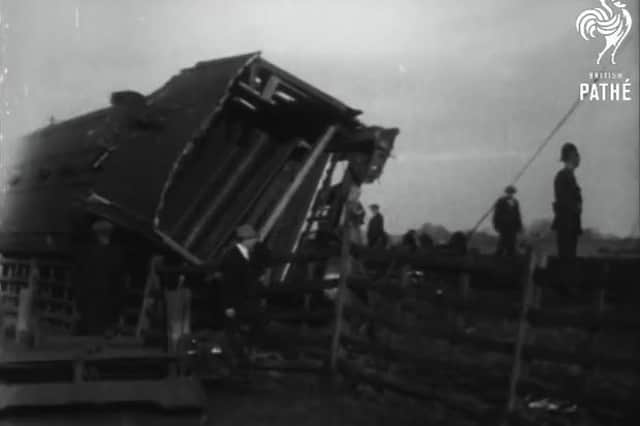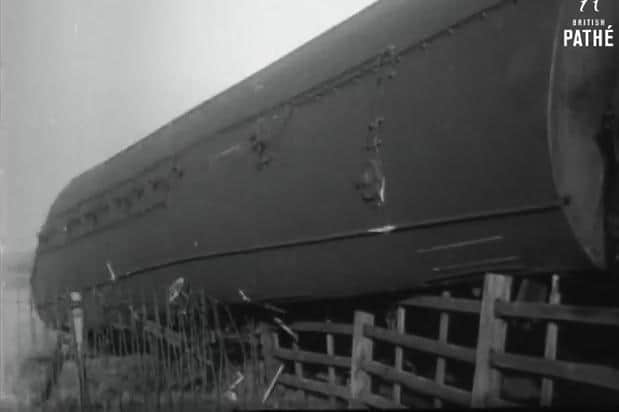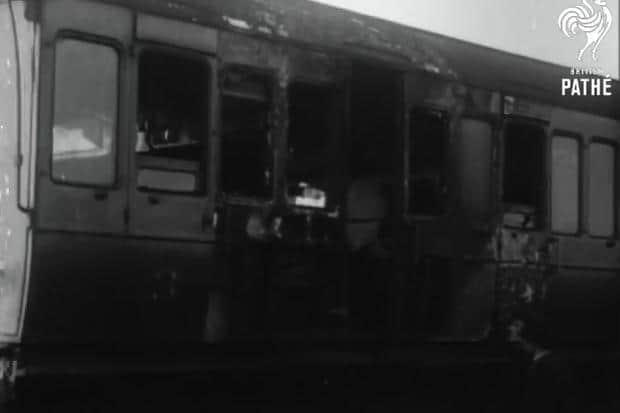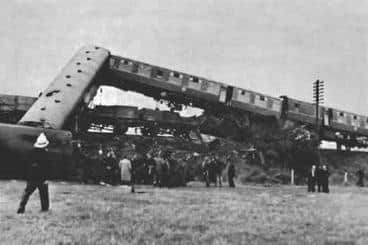A history of railway tragedies on the Fylde coast - from Lytham disaster to Singleton Bank crash


It was at 5.46pm precisely that the Liverpool Express, seemingly without warning, careered out of control and came off the tracks, leaving a trail of destruction in its wake in what would become known as the Lytham Railway Disaster.
Twelve passengers and the driver of the train were killed instantly, and a further two people later died of their injuries. Ten more were seriously hurt. Contemporary reports mentioned bodies trapped inside the wreckage of the train, which had caught fire during the crash, and a ‘midnight search for the dead’. The track was torn up, and the Moss Side signal box was struck by the derailed engine and destroyed. The signalman on duty at the time received injuries to his head, arms, and legs, and was ‘fortunate to have escaped with his life’, a 1925 report by the Ministry of Transport concluded.
Advertisement
Hide AdAdvertisement
Hide AdThe crash was investigated by Colonel John Wallace Pringle of the Railway Inspectorate, who found the single fatal flaw which had led to the loss of so many innocent lives.
At its peak in the early 1900s, British trains were operated by around 120 different competing companies. The year before the disaster, in 1923, the Government decided to combine these companies into four major groups, with London, Midland and Scottish Railway taking over all services in Lancashire. The largest commercial enterprise in the British Empire, its early years were fraught with infighting between parties who had, until recently, been business rivals. As a result, the development and upkeep of the industry sometimes took a backseat to the petty squabbles of its figureheads.
At the time of the crash, the Liverpool Express had just departed from Kirkham Station, and was passing Moss Side at its usual speed of 50mph. A sweep of the subsequent wreckage found the left-hand leading wheel of the train in a field some 50 yards away, and it was determined that this was the ultimate cause of the disaster: the wheel had broken away from the engine due to a large internal cavity, probably formed during the steel casting. The wheel was made in 1920, and had never been replaced, racking up a run of more than 100,000 miles. As the tread was worn away, the danger posed by the internal cavity grew - making it only a matter of time before tragedy occured.
Following Colonel Pringle’s report, all the other wheels produced in the same batch were removed from service and broken up, but none of these were found to contain any cavities. The report highlighted the fall in broken tyres, from 1,238 in 1880 to 234 in 1900, to just 20 in 1920 due to the introduction of the monobloc steel wheel and better inspection and maintenance methods.
Advertisement
Hide AdAdvertisement
Hide AdThe Lytham Railway Disaster was not the first accident on the tracks on the Fylde coast, nor would it be the last.


In September 1849 at Moss Side, an eastbound train containing passengers returning from the Lytham Agricultural Show crashed with another engine headed to Fleetwood. The drivers of both trains saw the other approaching on the line and set their engines to reverse, slowing down and undoubtedly saving the lives of those on board.
A report from the Preston Guardian, published on September 22 1849, read: “A considerable number of the passengers were severely cut and bruised, and many ill shaken, but no lives were lost, nor did any one receive any serious injury likely to be permanent. Blackened arms and legs, a few cat lips, scratched faces, and a few bloody noses, were the principal injuries sustained, beyond a multitude of hats staved in, and a few coats torn. The escape from serious loss of life was almost miraculous.”
In November 34, 64-year-old Thomas Morley, of Riley Avenue, St Annes, was killed after being hit by a train at Moss Side crossing. The crossing had been closed at the time to allow the 5.10pm Blackpool Central to Kirkham train to pass, however, Mr Morley, who was driving home from work at the time, crashed into the gate, causing it to open. The car continued onto the tracks, where it was struck at 40mph by the passing train.
The Singleton Bank rail crash


Advertisement
Hide AdAdvertisement
Hide AdOn July 16 1961, a deadly train crash near Weeton claimed the lives of seven people, and left more than a hundred others injured.
The Singleton Bank rail crash happened at 8.50am, when an express passenger train containing 350 people crashed into the rear of an engineer’s ballast engine which had been working at the SIngleton Bank signal box.
The ballast train had been working in the area since 8.40am that morning, and was just about to leave for Singleton Station when the tragedy occurred. An investigation found the crash was a result of a ‘serious error’ by the signalman, who gave the passenger train the go-ahead to continue down the line.
The leading coach of the 200-ton train, travelling at 45mph, hit the rear of the 39-wagon ballast, destroying the rear van. The train then mounted another six wagons, before veering off to one side. The front two coaches broke off from the rest of the train and tumbled down a 15ft embankment, landing in a field below.


Advertisement
Hide AdAdvertisement
Hide AdSeven people were killed in the crash, including the driver. Another 116 people were hurt, and were taken to local hospitals where 18 of them were kept in for their injuries. A man who was working on the rear of the ballast train leapt off the wagon when he saw the express train approaching, and suffered minor injuries and shock.
Among the dead were was Mrs Jennie Heap, of Birtwistle Street, Great Harwood, who was travelling with her husband Leonard, who survived with head injuries.
A weaver called Elizabeth Binns, of Cleveland Street, Colne, was also killed and her funeral was held the following week at Kelbrook Parish Church.
A report by Brigadier C. A. Langley of the Ministry of Transport criticised the poor management of those working the rails that day. An inquest found the victims died due to a misunderstanding of, and the non-compliance with, signalling regulations.
Thanks for reading. If you value what we do and are able to support us, a digital subscription is just £1 for your first month. Try us today by clicking HERE.